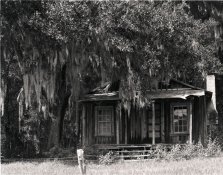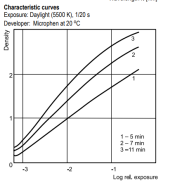I typically shoot HP5 and FP4 in medium format. How does the FOMA compare? Don't want to be a cheap skate but if it's half the cost that's a big savings. Are there any quality control issues with FOMA?
Foma sheet film is fairly priced, "per surface" price is similar to roll film, other manufacturers have a different pricing policy penalizing sheet film.
One can get totally Pro results with Foma sheet film, these are the points I feel interesting for its usage:
> When wet, Foma emulsion is well softer than the Kodak/Ilford ones, so extra care has to be played in the processing to not have scratches.
> Box speed is a little optimistic, as datasheet suggests it was calculated for an speed increasing developer and to a higher than regular Contrast Index. In practice use a bit lower EI that you would use for the same Kodak/Ilford box speed, 1/3 to 1/2 stop correction would be sound.
> Extreme highlights (say beyond +4 stops) in Foma Films are more shouldered than Kodak/ilford usually. This is not good or bad, it can be benefical to print highlight detail easier in the darkroom, or it may blow detail in the extreme highlights, still all can be modified in the processing with some compensation or compression. Foma films have a more classic behaviour (more shouldered in the extreme highlights), not specifically bad, but it may require adjusting processing after a transition from ilford/kodak, I'd suggest to practice with 35mm roll film and spot metering shadows and highlights to find the useful latitude at both sides, and later investigating how processing influences.
Personally I'm mostly using Kodak/ilford, but I'm starting to shot some Foma sheet film because IMO it has a fair pricing.







